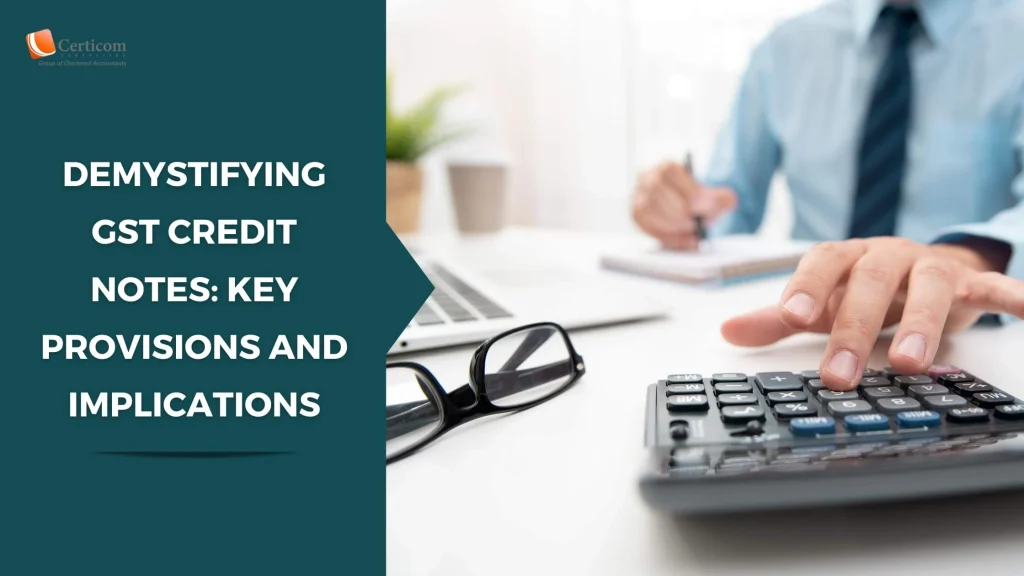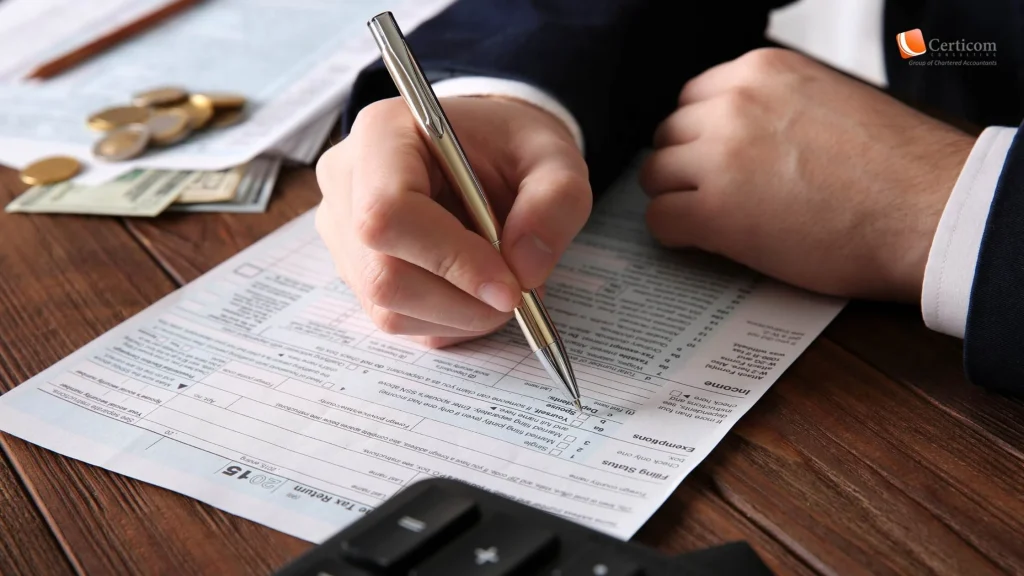Demystifying GST Credit Notes: Key Provisions and Implications

Section 34 of the Goods and Services Tax (GST) Act provides guidelines on credit notes, a crucial tool for adjusting invoice values in specific situations. A credit note is issued by a registered supplier to rectify discrepancies or reduce the taxable value of an invoice. These adjustments may arise due to incorrect tax calculations, overcharged tax rates, or returns of goods and services by the recipient. Proper issuance and reporting of credit notes ensure accurate tax compliance and help maintain transparency in financial records.
1. What is a Credit Note?
A credit note is issued to adjust the invoice value in cases where the actual value of supply is lower than what was originally recorded. This adjustment helps in aligning tax liabilities with actual transactions.

2. Circumstances for Issuing a Credit Note
A credit note may be issued under the following conditions:
a. Reduction in the Value of Goods or Services Supplied:
Example: If the actual value of goods supplied is ₹10,000 with an 18% GST rate but was mistakenly invoiced as ₹1,00,000, the supplier must issue a credit note for ₹90,000 and adjust the GST accordingly.
b. Excess Tax Charged in the Invoice:
Example: If an item is invoiced at ₹1,00,000 with GST at 28% instead of the correct 18%, a credit note for ₹10,000 GST adjustment can be issued.
c. Return of Goods or Services:
If the recipient returns goods or services due to defects, incorrect deliveries, or rejection of services.
3. Who Can Issue a Credit Note?
Only a registered supplier under GST can issue a credit note to the recipient.
The recipient cannot issue a credit note under the GST Act.
4. Time Limit for Issuing a Credit Note
While there is no restriction on when a credit note can be issued, it must be reported in GST returns within a specific period.
5. Time Limit for Reporting in GST Returns
A credit note must be reported within: a. November 30 of the following financial year, or
b. The date of filing of GSTR-9 (Annual Return), whichever is earlier.
Example:
If an invoice was issued on May 15, 2024, the credit note can be reported in GST returns until November 30, 2025, or the date of filing GSTR-9 for FY 2024-25, whichever is earlier.
If this period expires, the credit note cannot be reported in GST returns.
6. Applicability to Different Supplies
A credit note can be issued for:
Taxable supplies
Exempt supplies
Nil-rated supplies
7. Impact on GST Returns
Supplier’s Return: Reduces the supplier’s output tax liability.
Recipient’s Return: Reduces the recipient’s input tax credit (ITC).
8. Reporting Credit Notes in GSTR-3B
Credit notes must be reported in the relevant sections of GSTR-3B:
Table-4A(1): Imports of goods
Table-4A(2): Imports of services
Table-4A(3): Reverse charge mechanism (RCM) transactions
Table-4A(4): Input Service Distributor (ISD) credit notes
Table-4A(5): Forward charge invoices
Credit notes should not be reported in Table-4B(2)

9. Linking Credit Notes to Original Invoices
The reporting deadline is based on the invoice date, not the credit note issuance date.
Example: If an invoice was issued in FY 2023-24 and a credit note was issued in March 2025, the reporting deadline would have expired on November 30, 2024, or the date of filing GSTR-9.
10. Commercial Credit Notes
If the reporting deadline has passed, the supplier cannot report the credit note in GST returns. Instead, a commercial credit note (without GST adjustments) can be issued for record-keeping purposes.
Credit notes are a critical component of GST compliance, helping businesses adjust tax liabilities and maintain accurate records. Proper reporting ensures alignment with GST regulations, thereby preventing unnecessary tax liabilities. Businesses must carefully track their invoices and issue credit notes within the stipulated timeframe to avoid compliance issues.
Related Post
A Beginner’s Guide to E-Filing Income Tax Return for FY 2024-25
Faking Tax Deductions? You Could Be Penalised Up To 200% Under Income Tax Rules
Book A One To One Consultation Now For FREE
How can we help? *




